
views
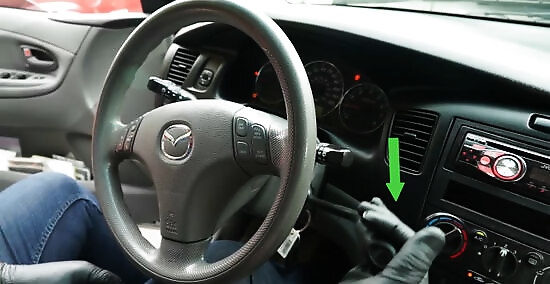
Park your car on a level surface with the engine running. You may want to shift the transmission briefly through each of its gear settings before putting it in park.
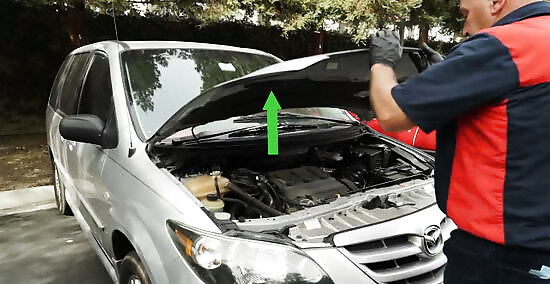
Raise the hood. There's usually a lever on the inside of your car that pops the hood, usually near the left hand side of the cockpit. Consult your owner's manual if you are unable to find it.

Find the automatic transmission fluid pipe. On many newer cars, the transmission fluid pipe will be labeled; if not, consult your owner's manual for its location. On a rear-wheel drive vehicle, the dipstick is usually in the rear of the engine, above the valve cover. On a vehicle with front-wheel drive, the dipstick is usually in the front of the engine and is connected to the transaxle, sticking straight up out of the transmission.

Pull out the transmission fluid dipstick. On most cars, the car must idling in park with the parking brake on and the transmission hot. Wipe the dipstick on a clean rag or paper towel, reinsert it and pull it out again to check the transmission fluid level. The fluid level should be between two marks labeled either "Full" and "Add" or "Hot" and "Cold." Usually, you should not have to add transmission fluid. If the level is down significantly below the "Add" or "Cold" line, you probably have a system leak and should take the car to your mechanic to have your car inspected for leaks by a technician.
Check the condition of the transmission fluid. Good automatic transmission fluid is usually red (although sometimes pink or light brown), without bubbles or odor. If any of the following conditions are true, take your car in for servicing. If the transmission fluid is a discolored brown or smells burnt, the fluid has been overheated and it can no longer protect the transmission as designed. The fluid can be tested further by putting some on a clean paper towel and waiting 30 seconds to see if it spreads. If it does not, the transmission should be serviced, or the transmission itself will suffer serious damage. If the transmission fluid looks milky brown, it has been contaminated by coolant from the radiator through a leak in the automatic transmission fluid cooler. Take the car to your mechanic at once. If the transmission fluid is either foamy or bubbly, there may be too much fluid in the transmission or the wrong transmission fluid has been used. EXPERT TIP Hovig Manouchekian Hovig Manouchekian Auto Repair & Design Specialist Hovig Manouchekian is an Auto Repair and Design Specialist and the Manager of Funk Brothers Auto, a family-owned business operated since 1925. With over 30 years of experience in the automotive industry, Hovig specializes in the process of auto repair and maintenance. He is also very knowledgeable in common automotive issues and needs including engine repair, battery replacement, and windshield accessory and maintenance. Hovig's knowledge and hard work have contributed to Funk Brothers Auto winning Angie's List Super Service Award for five consecutive years. Hovig Manouchekian Hovig Manouchekian Auto Repair & Design Specialist Act immediately if there is coolant in your transmission. Flush the transmission fluid immediately to remove contamination. Identify the leak source and see a mechanic for diagnosis and repair. Ignoring this can destroy your transmission.
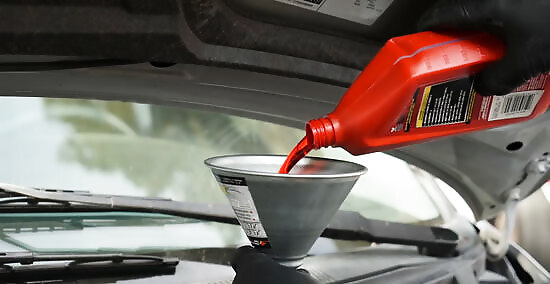
Add transmission fluid, if necessary. Add the fluid a little at a time, rechecking the level periodically, until it is at the correct level. If you've drained the care completely, you will probably need to add between three and four quarts of transmission fluid. Otherwise, check the dipstick regularly to avoid overfilling the fluid pan.

Run the car and take it through each gear if possible. This process allows the newly added transmission fluid to circulate and properly coat each gear, lubricating it. Start with the engine running and the car in park, if possible with the wheels off the ground. Go through First all the way to Third, including Drive, Overdrive, and Reverse gears. When finished, place the vehicle in park and let it idle to warm the fluid.
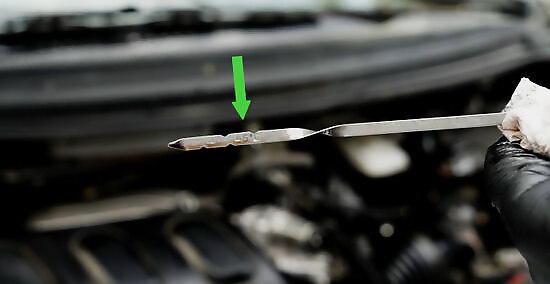
Check the dipstick again to determine how much additional fluid you may need to add, if any. Inspect the dipstick, as transmission fluid may have lowered from being circulated through the clutch packs, purging any air from the system. Add fluid as needed to bring to the correct level.
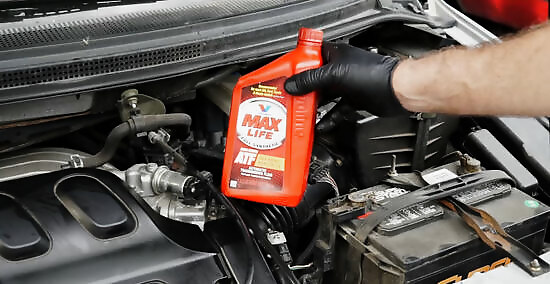
Add the necessary amount of fluid to bring it to its proper level. Depending on whether you're just giving your transmission fluid a top-up or you're replacing the entire pan with new transmission fluid, you may need to add extra fluid at this point. If you're simply topping up, you may need to only add only a quart of fluid, or even less. If you've drained the fluid from the pan, removed the pan and replaced the filter, you may need to add anywhere from 4 to 12 quarts, depending on the make and model.
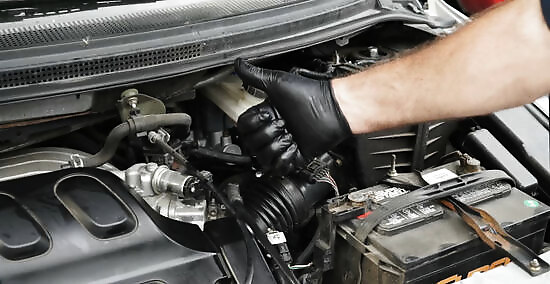
Finished. Your car's transmission fluid is now properly set and your car should be humming along.




















Comments
0 comment